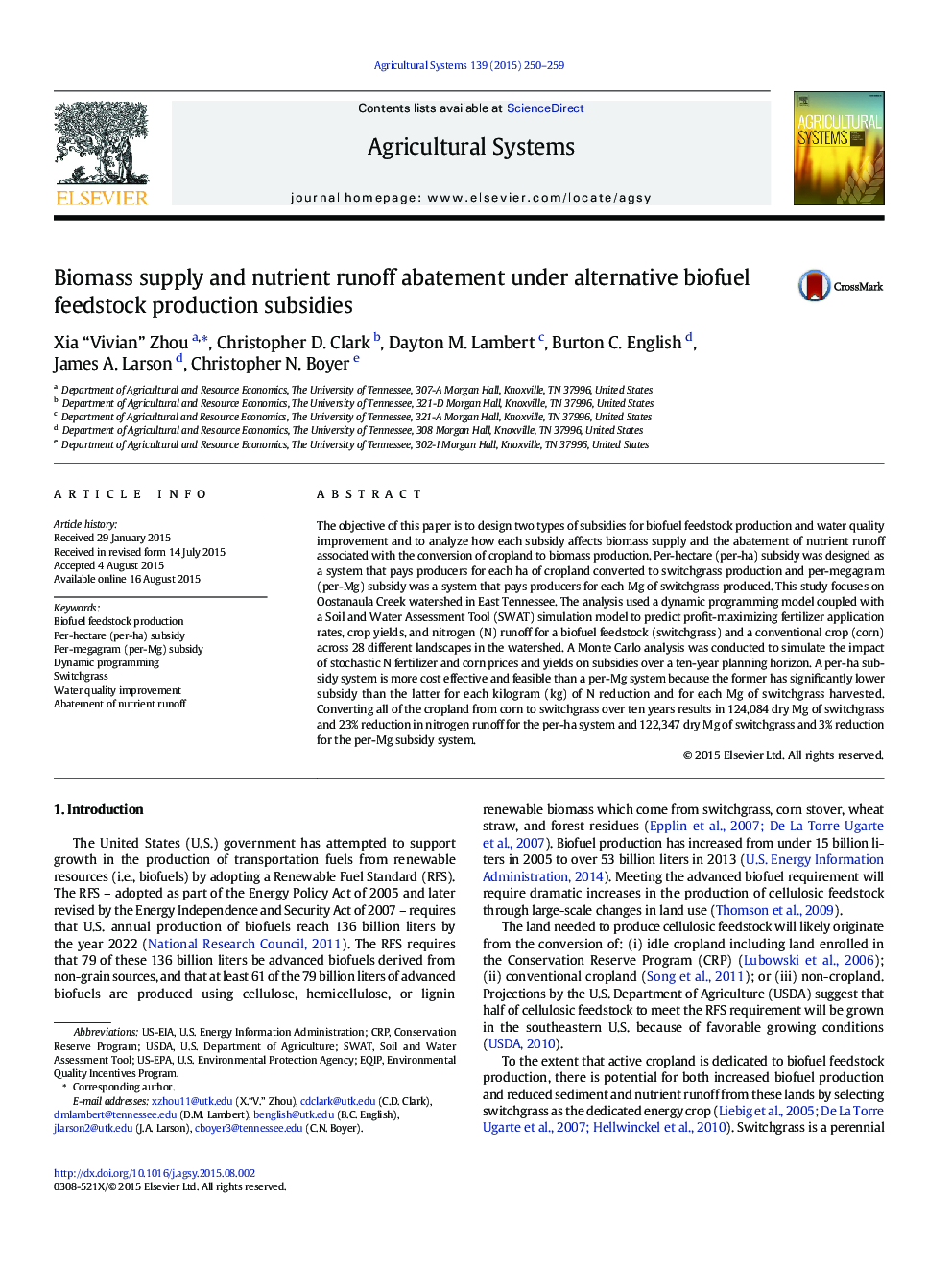| Article ID | Journal | Published Year | Pages | File Type |
|---|---|---|---|---|
| 6368498 | Agricultural Systems | 2015 | 10 Pages |
Abstract
The objective of this paper is to design two types of subsidies for biofuel feedstock production and water quality improvement and to analyze how each subsidy affects biomass supply and the abatement of nutrient runoff associated with the conversion of cropland to biomass production. Per-hectare (per-ha) subsidy was designed as a system that pays producers for each ha of cropland converted to switchgrass production and per-megagram (per-Mg) subsidy was a system that pays producers for each Mg of switchgrass produced. This study focuses on Oostanaula Creek watershed in East Tennessee. The analysis used a dynamic programming model coupled with a Soil and Water Assessment Tool (SWAT) simulation model to predict profit-maximizing fertilizer application rates, crop yields, and nitrogen (N) runoff for a biofuel feedstock (switchgrass) and a conventional crop (corn) across 28 different landscapes in the watershed. A Monte Carlo analysis was conducted to simulate the impact of stochastic N fertilizer and corn prices and yields on subsidies over a ten-year planning horizon. A per-ha subsidy system is more cost effective and feasible than a per-Mg system because the former has significantly lower subsidy than the latter for each kilogram (kg) of N reduction and for each Mg of switchgrass harvested. Converting all of the cropland from corn to switchgrass over ten years results in 124,084 dry Mg of switchgrass and 23% reduction in nitrogen runoff for the per-ha system and 122,347 dry Mg of switchgrass and 3% reduction for the per-Mg subsidy system.
Keywords
Related Topics
Life Sciences
Agricultural and Biological Sciences
Agricultural and Biological Sciences (General)
Authors
Xia “Vivian” Zhou, Christopher D. Clark, Dayton M. Lambert, Burton C. English, James A. Larson, Christopher N. Boyer,
